Marina Berezina
Year of birth: 1978
Where do you live: Novosibirsk, Russia
Your education: English and German teacher
Describe your art in three words: Emotions · Colors · Movement
Website
Could you share the moment when painting first became more than a hobby and turned into a true way of life for you?
In my life, painting turned from a hobby to a true way of life during my sailtrip to Kamchatka. I was on a sail boat, admiring the hills, volcanoes, fogs, storms, and wildlife around me, and I`ve realized that I could capture the colors, scents, and sensations in two ways: through words – stories and narratives, and through sketches and studies created in the moment. It’s important to note that I initially embarked on this journey rather than a specific open-air setting. I had no intention of painting. But looking around, I realized that without paints and brushes, I wouldn’t be able to convey what I feel and see at the same time. I realized that no photo neither video couldn`t capture my inner experiences and sensations. However, I could express them through colors, creating my emotions on canvas in the moment. This is how my life with paints and brushes began, where I use them to capture my experiences, emotions, and feelings in every new place I visit. New places, cultures, people change me, it means that all my sketches are also changed and born in a new technique, in a new approach.
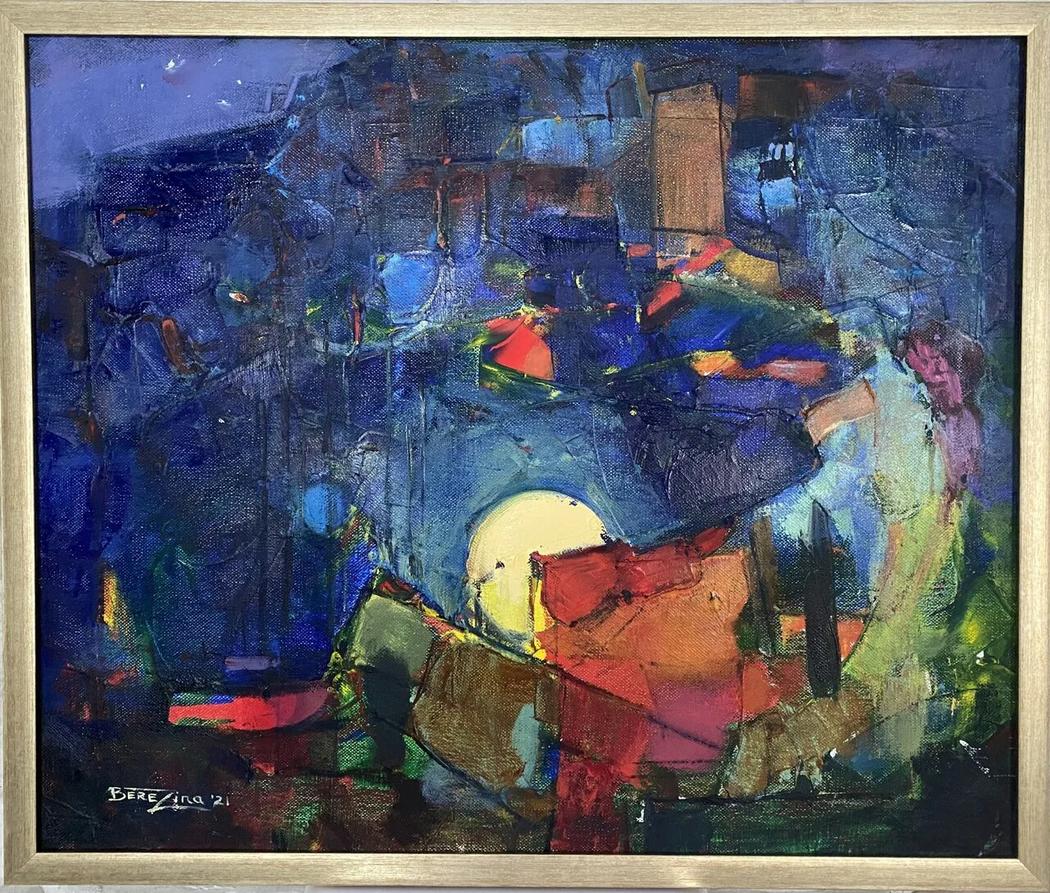 Marina Berezina | Artists Dream Dreams | 2021
Marina Berezina | Artists Dream Dreams | 2021
Your biography mentions that traveling is a major source of inspiration. Which destination has most profoundly influenced your art, and why?
I can definitely say that Zanzibar and Madagascar had a very strong influence on my perception of colors and light. Africa itself sounds like colors. It is musical in its multicolor, in its polychrome. When I first arrived in Zanzibar, I was shocked by the colors, their diversity, and their abundance! I immediately fell in love with the dark skin of the locals, which so vividly and fully accentuates the color of their clothing. In comparison, tourists look dull and uninteresting. The colors of the ocean. The colors of the sky. The colors of fruits. The hum of voices. The slowness of my movements. All of this made a deep impression on me and greatly influenced my painting. I find myself bored with black and white colors, tones, and halftones. I love the drumbeat of colors in my paintings!
Each of your paintings seems to capture a story or a feeling. How do you decide which emotions or memories to translate onto canvas?
I don’t look for a special reason to start painting. I don’t wait for any muse or any idea. I grab my paints, brushes, and canvas and start painting whenever I have a free moment, time limited by other businesses. I create sketches during the 20-30 minute breaks between sailboat races to capture the intense emotions of the competitions. I paint when I arrive home exhausted, and the only thing I want to do in the moment – is lie on the couch and watch TV, but I choose to stand in front of my easel. I paint when my husband is cooking dinner, and I enjoy the free time. I don’t look for any idea. Usually, the idea comes to me as soon as the first traces of paint appear on the canvas. Colors are more important to me. The idea comes from the relationships of colors, not the other way around. I never look for the right technics and rules; I trust my intuition to decide what is beautiful and what is not. Of course, the emotions from my travels influence the creation of my paintings. For example, after returning from Italy, I can paint the baobabs of Madagascar, but I’m afraid that my subconscious will pull me into the labyrinths of vivid memories of the narrow streets.
And of course, the first thing I put on the canvas is color. It’s the color that defines the idea of what I’m going to paint next. If I see a pair of yellow shoes or a red pencil, I’ll start painting them if their color touches my soul. But at the same time, even the color of a wilted flower can be more beautiful than any lipstick if it evokes memories of a particular moment.
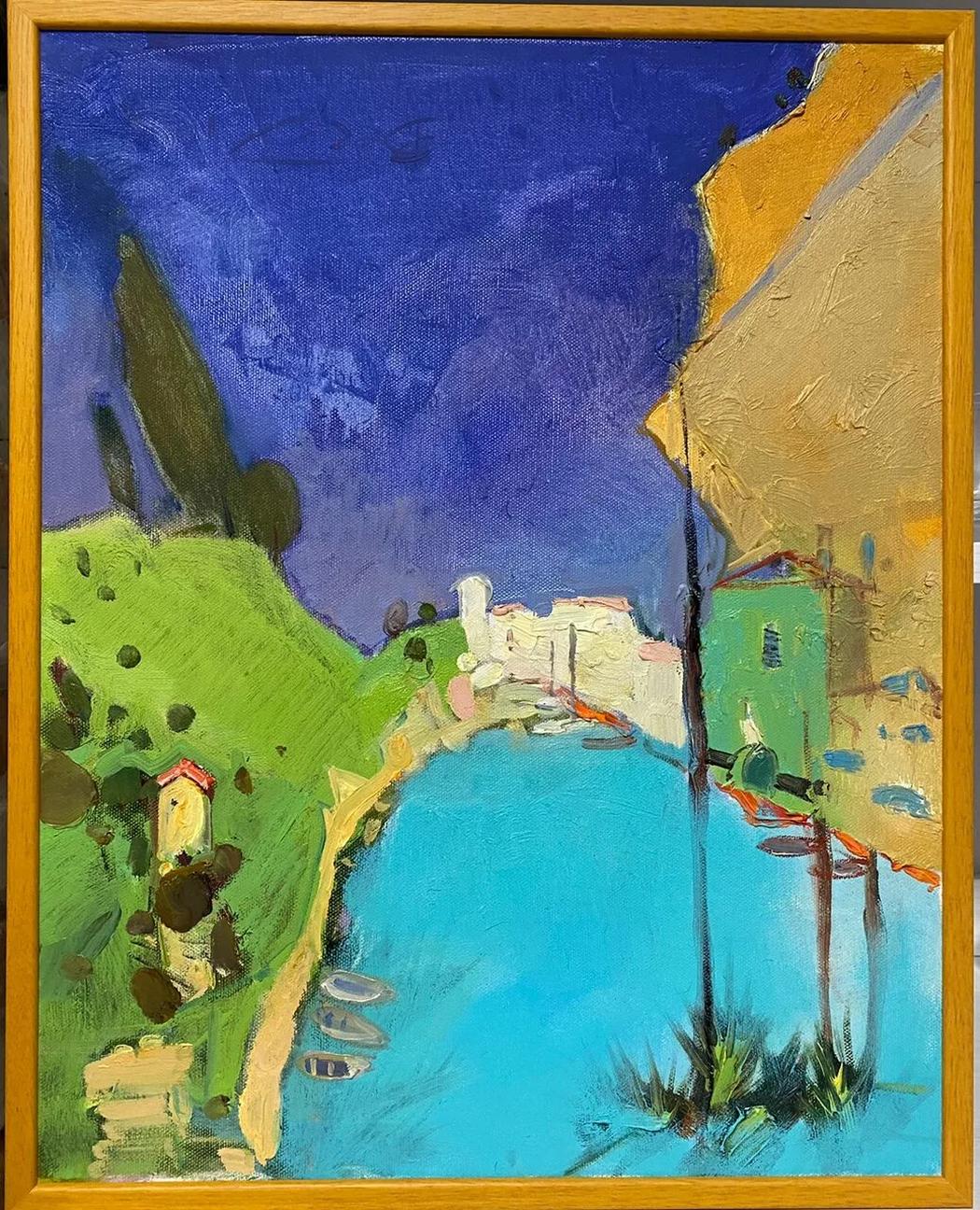 Marina Berezina | Quiet Bay
Marina Berezina | Quiet Bay
From the first idea to the final brushstroke, what does your creative process look like? Do you plan each step or allow improvisation?
Just as there is no universal formula for raising children, there is no universal process for painting. There are art-works that appeared in a few minutes, and I even didn’t understand how it has happened. There are works standing in a corner for years, because I`ve stopped at a certain point and wouldn`t know how to go next. Then, after several years, I finish them with a few brushstrokes. However, there are also works that I painted step by step. This is the most dangerous, because often in this technique you dig into the details and lose touch with the fleetings and impressions. That’s why I prefer to work on the time limit when I need to finish paintins very quickly – in this case, I definitely do not have any extra pettiness and details, which can drag on themselves the focus of attention from the emotions and colors of the picture.
You have learned from many contemporary masters. Which techniques or materials from these studies have become central to your own style?
All the artists I studied with said the same thing: you need to paint NOT objects, but impressions of what you see. Working with various masters, I did nothing but learn and memorize this truth. Thus, I learned to understand that materials and techniques are not important but the nature. It is more important to learn how to transfer your emotions and impressions to the canvas! And in this regard, no one’s techniques, neither knowledge and the material is not important. To tell about your impressions, you need your own techniques. Just as you can’t tell someone else’s story with someone else’s words. Each person will have their own words for the same story. Similarly, no one can teach you how to express your feelings in painting. If you understand this, you will paint in your own style. If you don’t understand it, you will paint objects, which is much more successful for photo in today’s world.
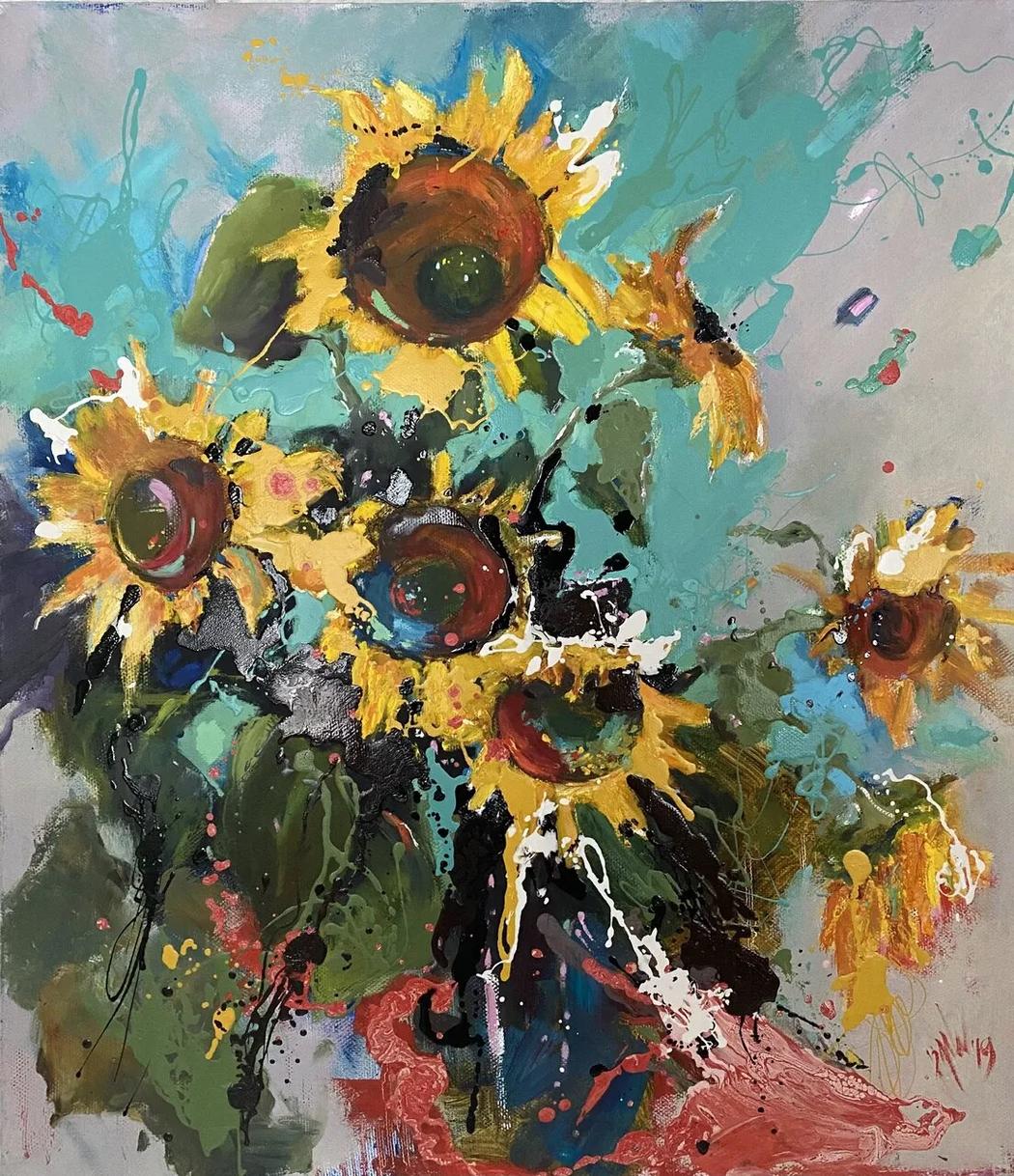 Marina Berezina | The Mystery Of The Third Planet
Marina Berezina | The Mystery Of The Third Planet
Your works often have vibrant colors and dynamic contrasts. How do you choose your palette to convey mood and movement?
When I start working from nature, I pick up colors and a palette unconsciously, because all this is in front of me, in front of my eyes, but moreover, all these make to birth feelings inside. And my feelings have colors and shades. Therefore, in nature I always get 100% into the color of my feelings. Sometimes, when I return home from a trip, I find sketches that I had intended to throw away when I first created them, because they seemed ugly to me at the time. This is a common experience for me, as I often see the Beauty created by God and realize that I cannot reach it with my brush. I feel powerless and talentless at the same time. However, my teachers have taught me to grit my teeth and not destroy my work under the pressure of my emotions, but to bring them home and revisit it later. So, when I return from my trips, even the most ugly sketches, in my first opinion, are filled with energy and color, because they convey emotions. And I like them.
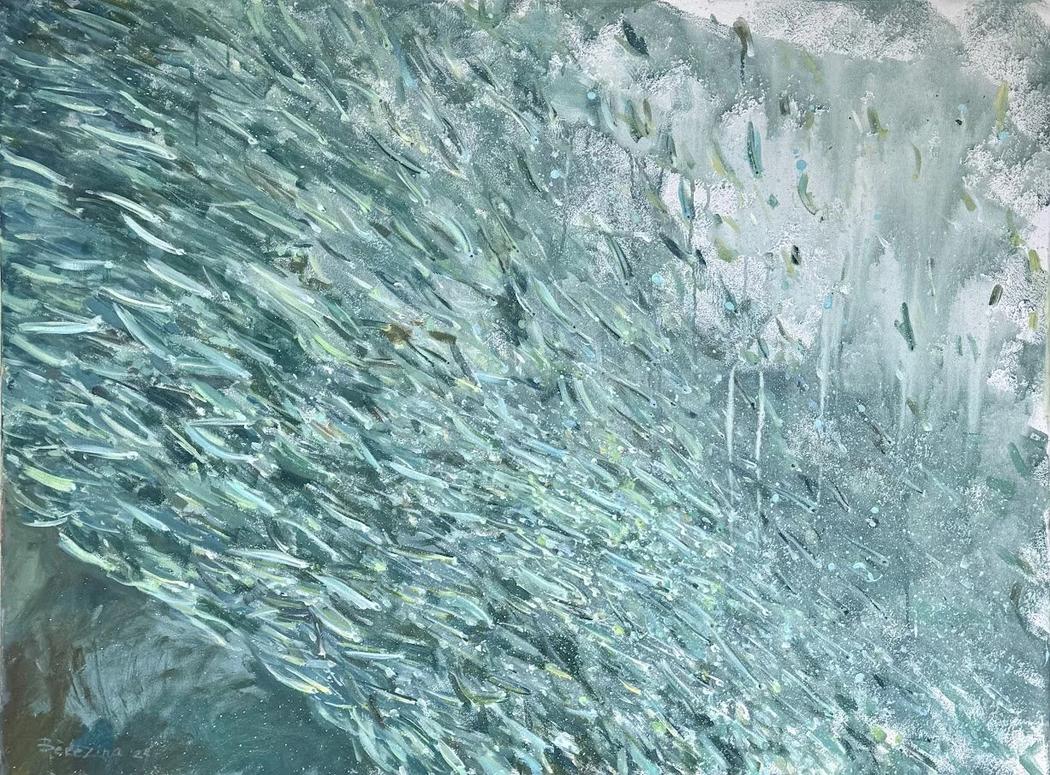 Marina Berezina | Dance Of The Underwater Currents
Marina Berezina | Dance Of The Underwater Currents
Several of your paintings combine natural motifs with abstraction. How do you find the balance between recognizable forms and free expression?
There is no balance. There is a great desire to make the viewer feel. It is not necessary for the spectator to feel the same way as I do. My paintings are as a starting point for reflection. They are like a train station that takes the viewer on a journey of imagination. I want everyone to have its own experience, so I don’t focus on detailing every aspect of the painting. Instead, I use abstraction to bring the idea to life, making it transformable and dynamic. A painting that makes the viewer live and feel, rather than just collect something to see.

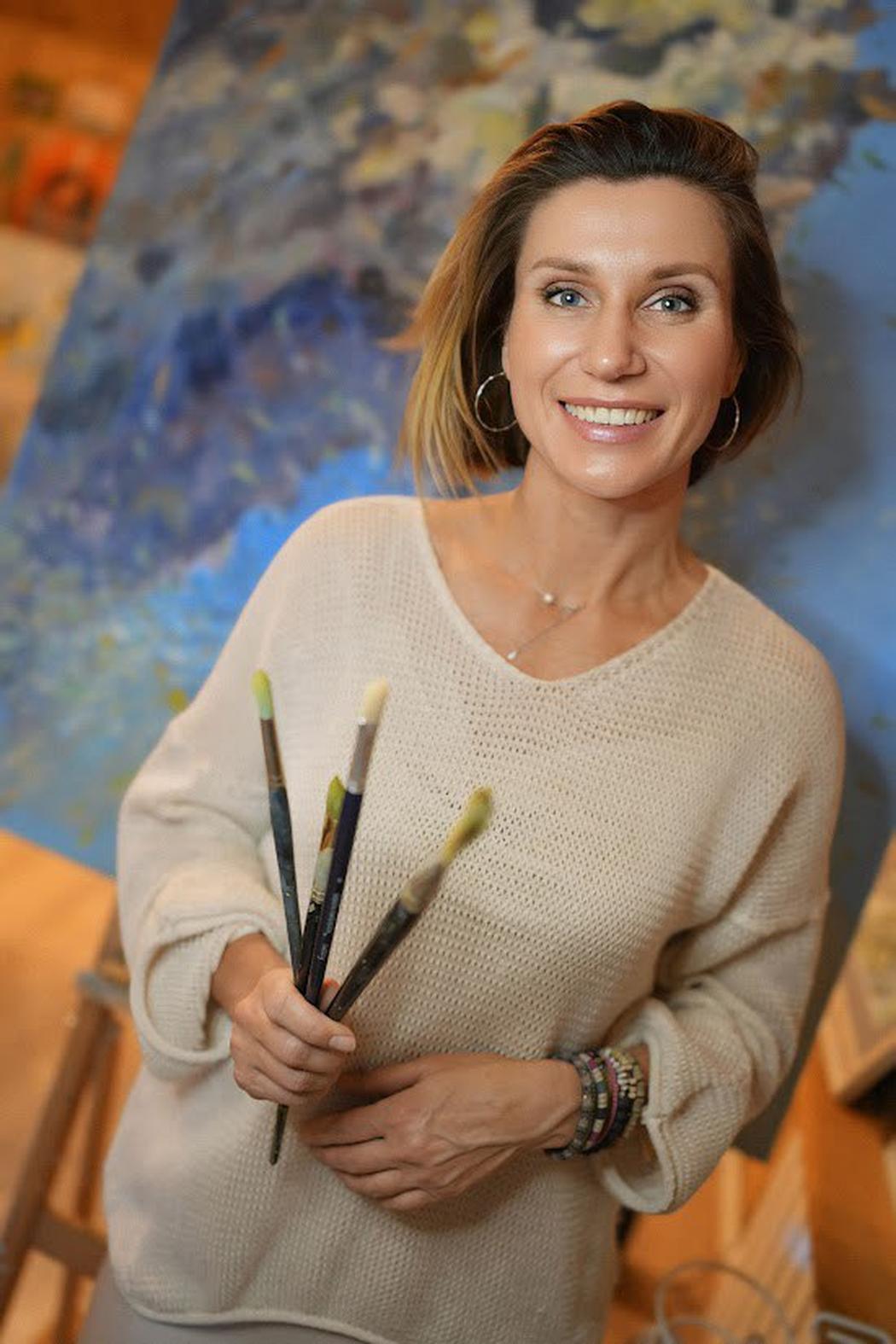
Leave a Reply